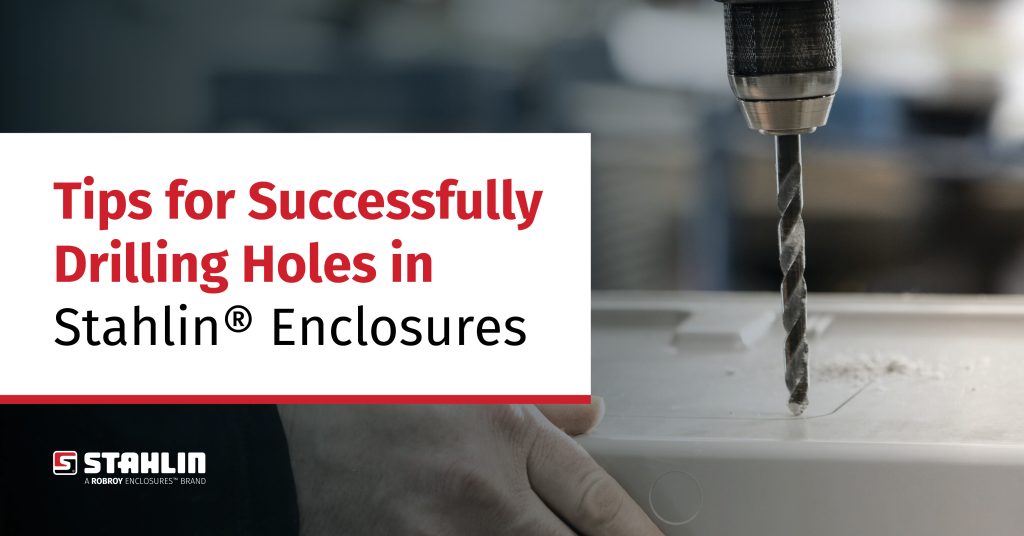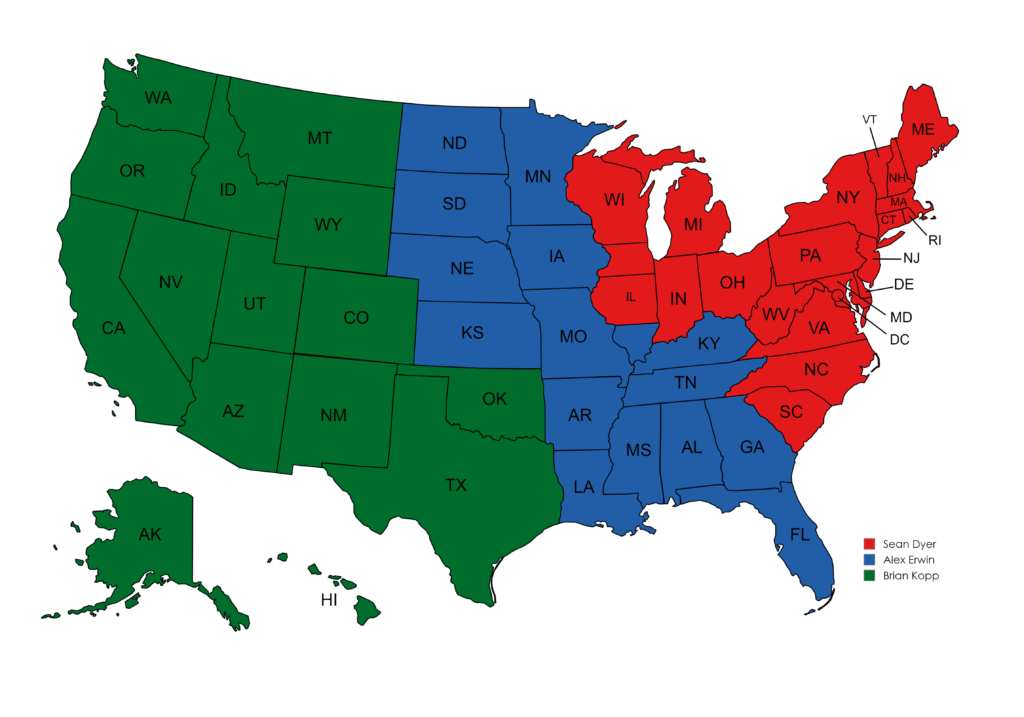
Drilling a hole.
Sounds like the easiest thing in the world.
In fact: making any type of modification to a non-metallic enclosure is significantly easier than doing so to a metallic enclosure.
However, certain techniques can help ensure that the job is done with optimum quality.
What can go wrong when drilling a hole in an Stahlin® Enclosure?
Delaminating or chipping of the outer surface or melting/strings of polymer material and glass fibers directly below the surface are the main failure modes occurring when holes are drilled improperly.
What causes this problem?
In most instances, excessive edge chipping around the perimeter of the cutout or hole is due to improper tools used and methods applied.
At other times, delamination failure can be caused by a tearing action when excessive material or improperly sheared fibers are removed.
Delamination can lead to downstream assembly problems, functionality problems, and become aesthetically unappealing if taken to the extreme.
What can be done to ensure clean, smooth drilling of holes without delamination?
The most common source of failure when making holes in an enclosure is a dull cutting tool. Dull tools tend to rip or tear the material.
A little planning and understanding of the proper methods to machining polymers up front can make all the difference in the final outcome of the operation.
A recommended tool for proper hole drilling is a carbide tipped or PCD diamond tipped hole saw or twist drill bit that will maintain a sharp cutting edge. High-Speed Steel (HSS) tools will also work but they will become dull resulting in excessive edge chipping and a poor-looking hole. We also recommend using high RPMs and low feed rates when using drills. This reduces the chipping around the cutout. The single most important factor though is keeping a very sharp tool.
Using a drill with a positive rake angle and thin points or split points can help reduce cutting pressure. Feed rates must also be constant and may even be reduced upon exiting from a hole to reduce flexing of the part when the drill exits. Using a solid back surface to support the part when drilling can also aid in reducing delamination and chipping.
Other options for drilling holes include:
• Hole Saw.
The easiest and least complex method to provide an opening in a composite enclosure is to use a fine-toothed hole saw. You must first layout the size and location of the cutout, pre-drill a small hole in the center within the cutout area for the hole saw to start, and then carefully cut out the area to be removed. This is more time-consuming and the least accurate method but can be accomplished in almost any environment. Keeping the saw perpendicular to the cutting surface, maintaining a consistent sawing action, and using a diamond/carbide impregnated saw or fine-toothed saw will provide the highest quality cutout with minimal edge chipping.
• Routing.
This method produces very clean holes and cutouts but also requires the holes to be manually laid out beforehand and a steady hand to stay within the layout lines. The use of a jig or fixture to help guide the handheld router or the use of CNC machining centers is helpful to keep straight edges and clean cutouts. The use of diamond impregnated router bits is preferred for longevity, but carbide bits will work just as well.
• Punching
Using a standard hole punch produces a good clean hole but can leave chipped edges if the punch is dull. Again, maintaining sharp tools is essential to producing clean cutouts. A pilot hole is required before using a standard hole punch. Manual or hydraulic punch actuators can both be used with composite materials. Punching is not recommended on polycarbonate.
Did you know Stahlin® can modify your enclosures for you? In addition to holes and cutouts, we provide:
- Custom mold-in colors
- Silk screening & Digital Printing
- EMI/RFI shielding
- Custom window sizes
- Custom size enclosures
You can request modified enclosures at https://stahlin.com/modright/
